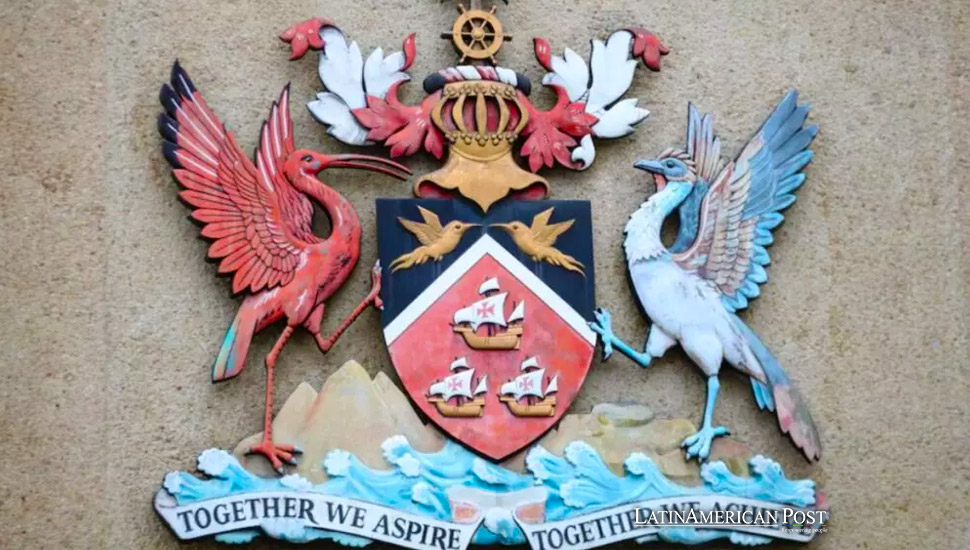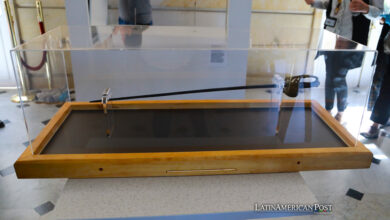Trinidad and Tobago Removes Columbus’s Ships From Coat of Arms Seeking Decolonization

Trinidad and Tobago is set to revise its national coat of arms for the first time since 1962, replacing colonial references with symbols reflecting its rich cultural heritage. This move marks a significant step towards decolonization in the eastern Caribbean nation.
Trinidad and Tobago, an island nation in the Caribbean, is boldly redefining its national identity by redrawing its coat of arms. The current coat of arms, which has remained unchanged since the country gained independence from the United Kingdom in 1962, features elements that reflect the island’s colonial past. Among these are the three ships—Pinta, Nina, and Santa Maria—used by the explorer Christopher Columbus during his voyage to the New World. These symbols, representing the arrival of European colonization, are now set to be replaced by the steelpan. This percussion instrument originated on the island and symbolized Trinidad and Tobago’s cultural heritage.
Many in the country have lauded the decision to remove these colonial references. It represents a significant move towards reclaiming and celebrating the island’s indigenous and African roots while distancing itself from the remnants of European colonization. Prime Minister Keith Rowley, who announced the changes at a party convention for his governing People’s National Movement, emphasized that this is part of a broader effort to remove colonial relics from the country’s constitution and national symbols. The changes are expected to be finalized by late September.
Reclaiming National Identity
The revision of the coat of arms is the first significant alteration since it was initially designed after Trinidad and Tobago’s independence in 1962. The original design includes hummingbirds, a palm tree, and the scarlet ibis, Trinidad’s national bird. While these elements will likely remain, removing Columbus’s ships is a deliberate attempt to redefine the nation’s identity, focusing on symbols that resonate more with the island’s people and history.
The steelpan, which will replace the ships, is not just a musical instrument but a powerful cultural symbol for Trinidadians. It was developed on the island in the 1930s and has since become a representation of the ingenuity and resilience of the people of Trinidad and Tobago. By elevating the steelpan to prominence on the national coat of arms, the country clearly states what aspects of its history and culture it values most.
This change is part of a more significant, global movement to reassess and often remove symbols of the colonial era, particularly those associated with figures like Columbus, whose arrival in the Americas marked the beginning of centuries of exploitation and oppression for indigenous peoples. Across the United States, for example, statues of Columbus have been removed or toppled in recent years as part of a broader reckoning with the nation’s colonial past.
Revisiting Other Colonial Symbols
The decision to alter the coat of arms is just one part of Trinidad and Tobago’s efforts to distance itself from its colonial past. The government also plans to hold public hearings on whether other symbols with colonial connections, such as statues and monuments, should be removed. These hearings will allow citizens to voice their opinions on which aspects of the island’s colonial history should be preserved and which should be retired.
Prime Minister Rowley also desires to abandon the UK King’s Privy Council as Trinidad and Tobago’s highest court of appeal. This legal arrangement, a holdover from the colonial era, remains in place for several Commonwealth countries, including Trinidad and Tobago. However, there is growing sentiment in the region that these countries should instead rely on the Caribbean Court of Justice (CCJ). This regional judicial body serves as several Caribbean nations’ final appeal court.
St. Lucia, for example, voted last year to remove the Privy Council from its legal system, opting instead to join the CCJ. Rowley has argued that continuing to rely on the Privy Council undermines Trinidad and Tobago’s sovereignty, likening it to being “squatters on the steps of the Privy Council.” Moving away from this colonial legal structure would be another significant step in the country’s journey toward complete independence.
The Broader Push for Reparations and Decolonization
Trinidad and Tobago’s actions are part of a broader trend across the Caribbean to address the legacies of colonialism. The island is one of 14 Caribbean nations that have sought reparations from the UK and other colonial powers for the historical injustices inflicted during the colonial period. These demands for reparations are rooted in the belief that the colonial powers owe a debt to the Caribbean nations for the exploitation of their land and people during the era of European colonization.
This push for reparations is gaining momentum globally as countries and communities seek to hold former colonial powers accountable for their actions. The changes to Trinidad and Tobago’s coat of arms can be seen as part of this broader movement to redress historical wrongs and reclaim national identities that were suppressed during the colonial period.
The ongoing efforts to remove colonial symbols, whether through changes to national symbols like the coat of arms or by seeking reparations, are not just about the past. They are also about the future—creating a national identity that reflects the values, history, and culture of the people living in Trinidad and Tobago today. By taking these steps, the country is positioning itself as a leader in the global movement to decolonize and to ensure that its national symbols reflect the pride and heritage of its people.
A Nation Redefined
As Trinidad and Tobago progresses towards finalizing these changes, the population has a palpable sense of pride. The revisions to the coat of arms are seen as a long-overdue acknowledgment of the island’s rich cultural heritage and a necessary step towards a more inclusive and accurate representation of the nation. The country is rewriting its coat of arms and narrative by removing references to European colonization and replacing them with symbols like the steelpan.
The changes to the coat of arms, the potential removal of colonial statues, and the shift away from the Privy Council are all part of a broader effort to redefine what it means to be Trinidadian and Tobagonian. It is about looking forward to a future where the nation’s symbols and institutions reflect its people’s true diversity and richness, free from the shadows of colonialism.
Also read: Newly Discovered Similarities Between the Last Emperors of the Aztec and Inca Empires
Trinidad and Tobago’s journey towards decolonization is far from over, but the steps it takes today will have a lasting impact on future generations. By embracing its history and culture, the country is setting an example for other nations in the Caribbean and beyond that are grappling with their colonial legacies. The road ahead may be challenging, but it is one that the people of Trinidad and Tobago are ready to walk—towards a future where their national symbols genuinely belong to them.





